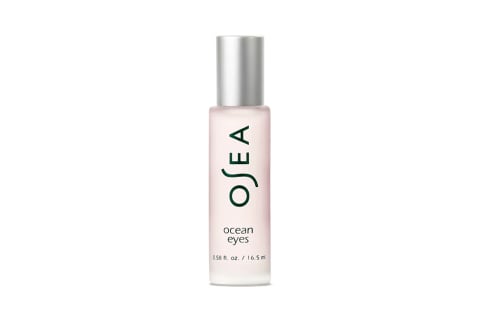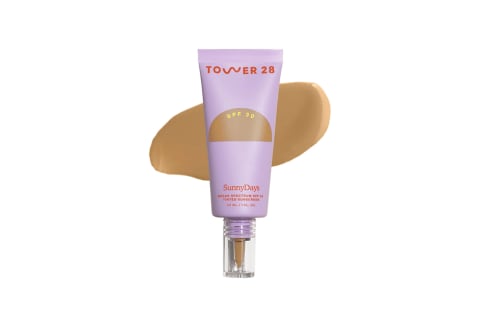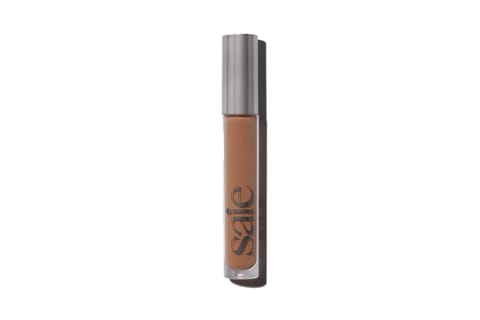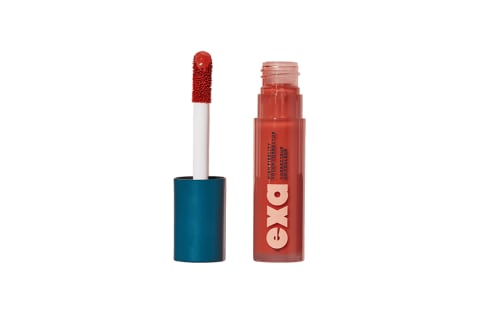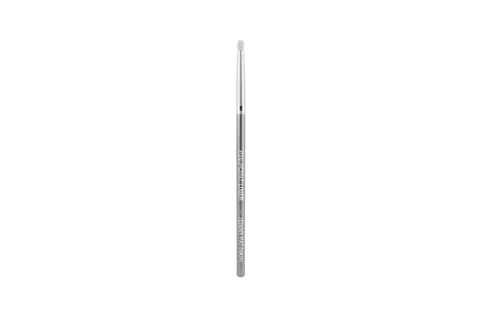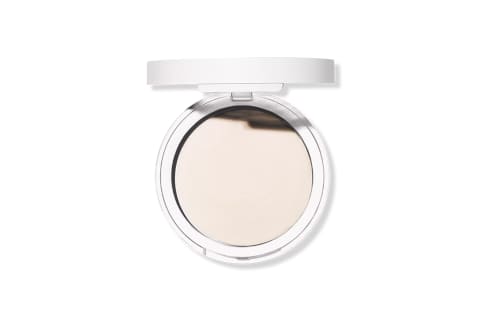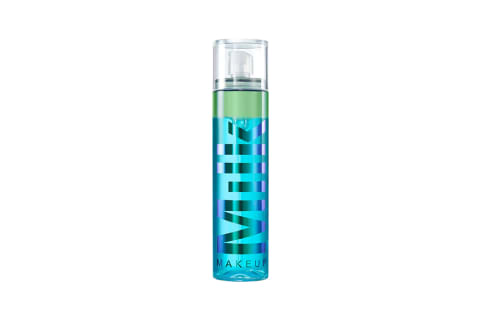Big, big caveat: Applying concealer takes some strategy. You can’t wildly swipe on globs of product and expect it to magically erase your dark circles, fine lines, and breakouts. Concealer can be transformative, yes, but it also has the ability to backfire—without the right plan of action, it can bring even more attention to exactly what you’re trying to disguise. “I like to make sure that the skin under the eyes is well moisturized so that it’s nice and plump,” says makeup artist Jenny Patinkin. “This will enable a small amount of concealer to glide over the area for smooth, even coverage.” Spend some extra time (gently!) dabbing in a moisturizer or eye cream, or you can opt for a cooling eye serum for extra de-puffing. When it comes to concealing blemishes, still, you’ll want to add an extra foundation step (if you choose to use one). Foundation generally goes before concealer, as the base creates an even canvas. “I like to apply foundation underneath the concealer as both a color-correcting primer and a textural barrier. It helps to stop the concealer from gripping onto the blemish in a very obvious way,” Patinkin adds.
Osea Ocean Eyes Age-Defying Eye Serum
Tower 28 SunnyDays Tinted SPF Sunscreen Foundation Of course, the finish can vary, too: Some prefer a creamy, dewy payoff, while others are looking for a heavily pigmented, full coverage focus. “For most people who need to cover blemishes, a thicker pan or stick concealer will give fuller coverage,” Patinkin shares. You can find every type of formula in our concealer roundup. Rather than swatching on the inside of your wrist, Patinkin recommends applying right on the under-eyes, if you can. “Try to swatch your concealer under your eyes, then hold a mirror over your head, up to the lights or the sky. This will show you what the color looks like without any shadows on your face and with an even distribution of reflective light,” she says. As for blemishes, you’ll want to use a true shade match—or ideally even a half to one shade darker than your foundation. “If your concealer is too light, it will give the optical illusion that your pimple is protruding very far from the skin, whereas if it’s a little darker, it’ll give the illusion that it’s flush with your skin,” Patinkin shares. As a general makeup rule: Lighter shades bring forth an area, while darker shades help recede it.
Saie Hydrabeam Brightening + Hydrating Under Eye Concealer
Exa High Fidelity Balancing Color Corrector For those with an affinity for fingerpainting, yes, you can use your fingertips to work the product into the skin—in fact, the body heat from your fingers warms up the formula and makes for an even smoother application. Just make sure your fingers are clean before you dab on the concealer, especially if you’re applying it on blemishes—you don’t want to introduce even more oil and bacteria to the clogged pore, do you? On that note, “I don’t like to use a doe foot to cover pimples because if you get any bacteria on the applicator, you’re just mixing it in with the rest of the product in the tube,” Patinkin says. Best to swipe the doe foot on your hand and use a brush, sponge, or your fingers to dab on the product.
Jenny Patinkin Pin Point Liner Brush
Kosas Revealer Dual-Ended Makeup Blender Dot on the concealer with precision rather than broad swipes, covering most (but not all) of the discolored area. Patinkin recommends letting it sit for a moment so the formula can oxidize, then dampen a small beauty sponge and bounce it on the skin to blend. Check out the full tutorial here. And again, when it comes to concealing fine lines, selecting a formula is half the battle. “Choose concealers that are lightweight as opposed to thick and creamy,” Jaikaran advises. “These enhance creasing and can create buildup on the face.” See here for her full tutorial. After a couple of minutes, tap gently to blend, then follow up with a loose setting powder directly on the area. Not only are you setting the look for all-day wear (more on that in a moment!), but by burying the spot with powder, you’re absorbing excess shine and blurring the area so you’re less likely to see the raised mound. Find the full blemish-concealing tutorial here. “Think about how you contour your face—you emphasize light and dark and create a shadow and a highlight. You can do the same thing under your eyes!” she tells mbg about concealing under-eyes. First, choose a darker shade of concealer to use on the actual eye bag. Apply directly on the swollen skin and blend. Next, use a lighter concealer underneath the bag to add some depth. “It’s a visual trick that contours the under-eye,” Irwin says. We repeat: Lighter shades bring forth an area, and darker shades recede it. So using a light, bouncy number right underneath a puffy area can lift the surrounding skin, while a richer hue directly on top of the bag can help recede any ballooned creases. For blemishes, Patinkin likes to layer both setting spray and powder (an overachiever!), spritzing before and after applying concealer and finishing off with the tiniest bit of powder. “And I know it’s controversial, but I don’t like to use anything to set under-eye concealer. Powder can make thinning or ’lived-in’ skin look very dry, and I would rather look hydrated and a little creasy than dry and puckered,” she notes. Fair point. If you do want to set your under-eyes, you can always apply some loose powder with the edge of a beauty sponge. Use a press-and-roll motion to really stamp in the product and secure the base.
Well People Superpowder Brightening Powder
Milk Makeup Hydro Grip Setting + Refreshing Spray


